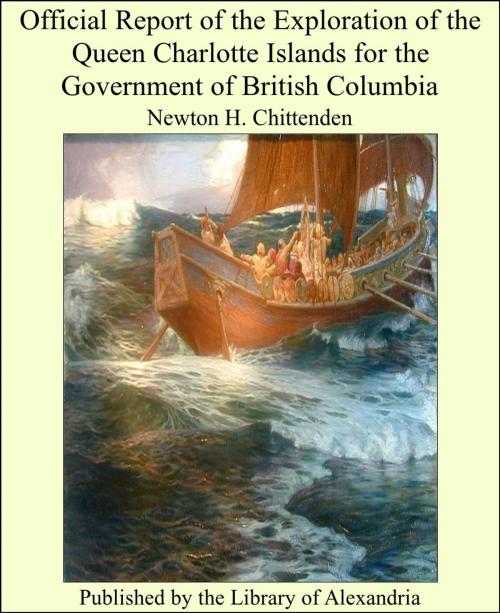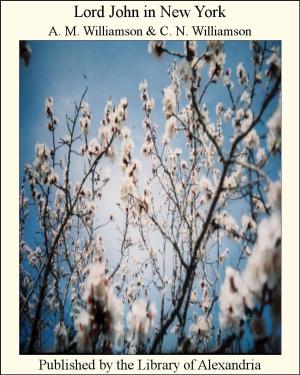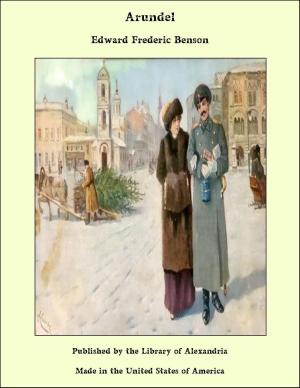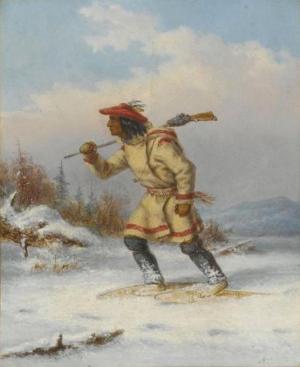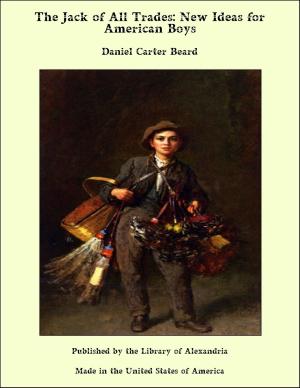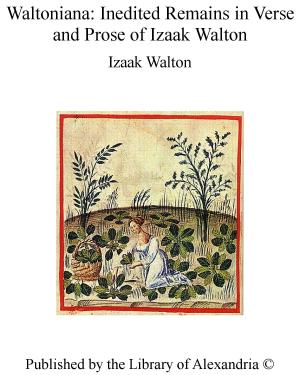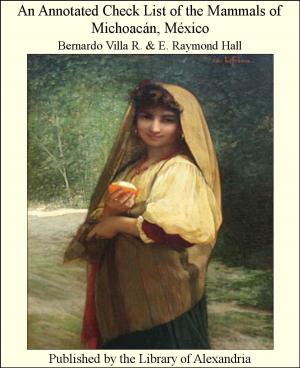Official Report of the Exploration of the Queen Charlotte Islands for the Government of British Columbia
Nonfiction, Religion & Spirituality, New Age, History, Fiction & Literature| Author: | Newton H. Chittenden | ISBN: | 9781465528278 |
| Publisher: | Library of Alexandria | Publication: | March 8, 2015 |
| Imprint: | Language: | English |
| Author: | Newton H. Chittenden |
| ISBN: | 9781465528278 |
| Publisher: | Library of Alexandria |
| Publication: | March 8, 2015 |
| Imprint: | |
| Language: | English |
Hyda Villages. There are seven inhabited, and fifteen deserted villages upon the islands, which will be briefly noticed in the order reached in circumnavigating the archipelago from North Island, proceeding eastward. They are situated upon the immediate shore, the houses generally standing in a row facing to the south or east, with from one to three tall carved poles in front. Kah-oh and Ki-oos-ta, both in ruins, the former containing six houses and ten poles, and the latter fifteen houses and eighteen poles, are situated near each Other on the south shore of Parry Passage, on Moresby Island. On the north side of the Passage, on the south end of North Island, opposite Lucy Island, lies Tadense, with its six small houses—still occupied by hunters and fishermen during the summer—and one lonely carved pole. On the rocky, exposed shore, just east of Klas-kwun Point, stands the three houses and one carved pole comprising the village known at Yatze. It is now only the occasional stopping place of parties of Indians en route to and from the west coast. Its builders formerly occupied deserted Kung, very pleasantly situated on the west shore, at the entrance to Naden Harbor. Fifteen houses, all in ruins but two, and twenty poles, are all that remain visible here, except numerous graves of the dead. There are three villages near the entrance to Massett Inlet: Yan—abandoned—with 20 houses and 25 carved poles, on the west side, and Utte-was—now Massett—and Ka-Yung, situated about a mile below, on the east. Massett is the principal village of the Hyda nation, now containing a population of about three hundred and fifty Indians, 40 occupied houses, 50 carved poles, and the ruins of many ancient lodges. The Hudson Bay Company have had a Trading Post here since 1855, Mr. Alexander McKenzie having been their agent for the last six years. He is the extreme north-western resident white man on the soil of the Dominion of Canada. The Episcopal Church of England established a mission at Massett in 1877, now under the excellent charge of Rev. Chas. Harrison and wife. At Ka-Yung we found only the ruins of a few houses and carved poles; also at the mouth of the Hiellen, where there was formerly a considerable village. A still larger one is said to have stood at the base of Rose Spit Point, called by the Indians Ne-coon, and another between this point and Cape Ball, on the the east coast of Graham Island, the remains of which may still be seen. We have now reached Skidegate, an imposing village, finely situated, on the north shore of Skidegate Inlet, eight or ten miles from its eastern entrance. It contains 30 houses and 55 carved poles. A Methodist Mission, Church, and School building occupies a prominent site in the back-ground. The village of Gold Harbour is situated upon Maud Island, three miles Further up the inlet. Its people, now numbering 108, removed from Gold Harbour, on the west coast, a few years ago. Here are 13 houses and 18 carved poles. Cumahewa, situated on the north shore of the inlet of that name, contains 60 people, 18 houses and 25 carved poles, and Skedance, on the opposite, only 12 Indians, but 25 houses and 30 carved poles. Tanoo, or Laskeek, on Tanoo Island, is next reached. It is second in population to Massett, containing 150 natives, 20 houses and 25 carved poles. There is only one more Hyda village to the southward, Ninstints, with 30 inhabitants, 20 houses, 25 carved poles, and 20 burial columns, occupying a rock-bound islet lying off the south-west coast of Moresby Island, near the western entrance to Houston Stewart Channel. There are five Other villages on the west coast of the islands, all abandoned, and most of them in ruins. Tasso, on Tasso Harbour, Gold Harbour, between Gold Harbour and Skidegate Channel, picturesque Chathl, on Canoe Passage, near its western entrance, Lenna-how, on Graham Island, opposite Nesto Island, Tiahn on Tiahn Cove, between Stowe Harbour and Frederick Island, and Susk, on Graham, opposite the latter. There are, besides these villages named, numerous houses and temporary lodges, from one to seven in a place, situated at the mouths of the principal salmon streams, near potato gardens, and convenient to choice hunting and fishing grounds. * * * * * PROGRESS REPORT NUMBER ONE, SKIDEGATE, Queen Charlotte Islands, May, 1884
Hyda Villages. There are seven inhabited, and fifteen deserted villages upon the islands, which will be briefly noticed in the order reached in circumnavigating the archipelago from North Island, proceeding eastward. They are situated upon the immediate shore, the houses generally standing in a row facing to the south or east, with from one to three tall carved poles in front. Kah-oh and Ki-oos-ta, both in ruins, the former containing six houses and ten poles, and the latter fifteen houses and eighteen poles, are situated near each Other on the south shore of Parry Passage, on Moresby Island. On the north side of the Passage, on the south end of North Island, opposite Lucy Island, lies Tadense, with its six small houses—still occupied by hunters and fishermen during the summer—and one lonely carved pole. On the rocky, exposed shore, just east of Klas-kwun Point, stands the three houses and one carved pole comprising the village known at Yatze. It is now only the occasional stopping place of parties of Indians en route to and from the west coast. Its builders formerly occupied deserted Kung, very pleasantly situated on the west shore, at the entrance to Naden Harbor. Fifteen houses, all in ruins but two, and twenty poles, are all that remain visible here, except numerous graves of the dead. There are three villages near the entrance to Massett Inlet: Yan—abandoned—with 20 houses and 25 carved poles, on the west side, and Utte-was—now Massett—and Ka-Yung, situated about a mile below, on the east. Massett is the principal village of the Hyda nation, now containing a population of about three hundred and fifty Indians, 40 occupied houses, 50 carved poles, and the ruins of many ancient lodges. The Hudson Bay Company have had a Trading Post here since 1855, Mr. Alexander McKenzie having been their agent for the last six years. He is the extreme north-western resident white man on the soil of the Dominion of Canada. The Episcopal Church of England established a mission at Massett in 1877, now under the excellent charge of Rev. Chas. Harrison and wife. At Ka-Yung we found only the ruins of a few houses and carved poles; also at the mouth of the Hiellen, where there was formerly a considerable village. A still larger one is said to have stood at the base of Rose Spit Point, called by the Indians Ne-coon, and another between this point and Cape Ball, on the the east coast of Graham Island, the remains of which may still be seen. We have now reached Skidegate, an imposing village, finely situated, on the north shore of Skidegate Inlet, eight or ten miles from its eastern entrance. It contains 30 houses and 55 carved poles. A Methodist Mission, Church, and School building occupies a prominent site in the back-ground. The village of Gold Harbour is situated upon Maud Island, three miles Further up the inlet. Its people, now numbering 108, removed from Gold Harbour, on the west coast, a few years ago. Here are 13 houses and 18 carved poles. Cumahewa, situated on the north shore of the inlet of that name, contains 60 people, 18 houses and 25 carved poles, and Skedance, on the opposite, only 12 Indians, but 25 houses and 30 carved poles. Tanoo, or Laskeek, on Tanoo Island, is next reached. It is second in population to Massett, containing 150 natives, 20 houses and 25 carved poles. There is only one more Hyda village to the southward, Ninstints, with 30 inhabitants, 20 houses, 25 carved poles, and 20 burial columns, occupying a rock-bound islet lying off the south-west coast of Moresby Island, near the western entrance to Houston Stewart Channel. There are five Other villages on the west coast of the islands, all abandoned, and most of them in ruins. Tasso, on Tasso Harbour, Gold Harbour, between Gold Harbour and Skidegate Channel, picturesque Chathl, on Canoe Passage, near its western entrance, Lenna-how, on Graham Island, opposite Nesto Island, Tiahn on Tiahn Cove, between Stowe Harbour and Frederick Island, and Susk, on Graham, opposite the latter. There are, besides these villages named, numerous houses and temporary lodges, from one to seven in a place, situated at the mouths of the principal salmon streams, near potato gardens, and convenient to choice hunting and fishing grounds. * * * * * PROGRESS REPORT NUMBER ONE, SKIDEGATE, Queen Charlotte Islands, May, 1884
